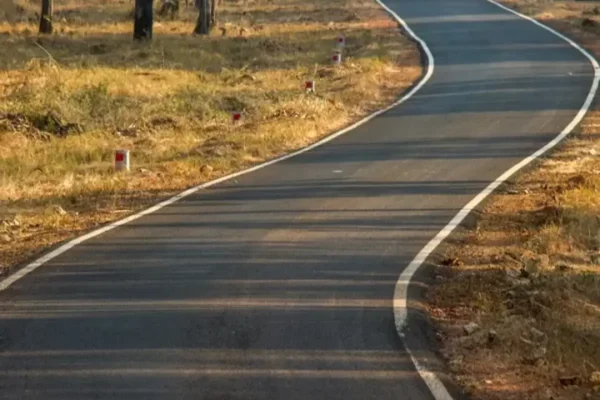Communication, in other words can be called as establishing contact with same or other species, but we communicate more with individuals of our own kind. We humans mostly communicate vocally or with the help of gestures.
But ever wondered how communication happens in other species! Species which prefers forested habitats and prefers to be silent mostly, quite interesting to know … I am talking about the Apex predator of the Indian Jungles … Yes, none other than the majestic Bengal Tiger!
Tigers keep on communicating with each other to demarcate home range, to express reproductive status, and also to challenge to a rival and also a mother needs to call her cubs.

It’s very interesting to study the way tigers communicate with other individuals, let’s have a look.
Tiger communication can be categorized in two different ways:
- Chemical communication.
- Physical communication or Visual or Auditory Signaling
In some ways chemical and physical communication are linked with each other
Chemical Communication
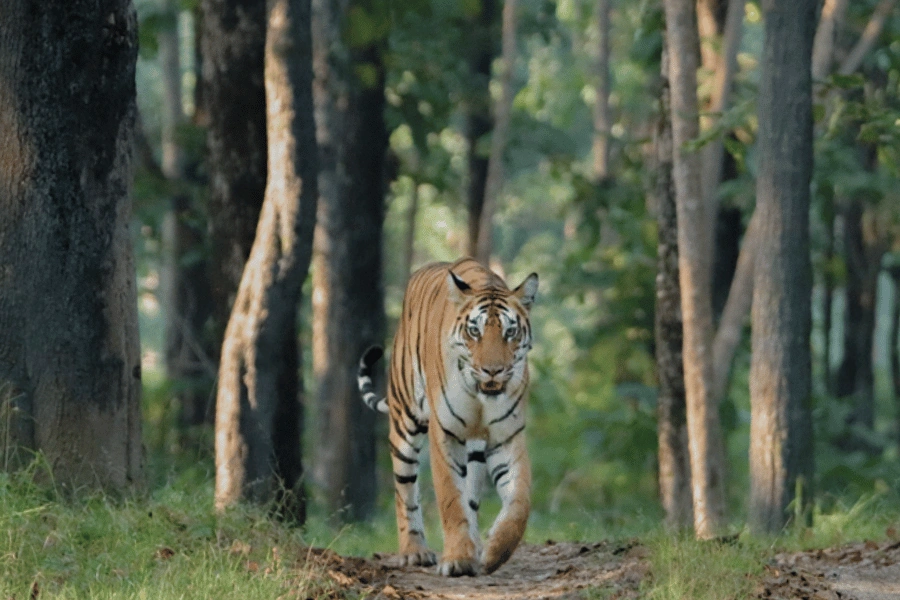
Chemical communication is an effective way for tigers who prefer to be silent mostly and doesn’t like to get noticed by herbivores and other carnivores. Two predominantly used ways used to communicate are spray marking and scrape marking. It gives an idea about the gender, whether a female is in oestrus cycle or not. Also it reveals individual identity. In chemical communication individuals doesn’t need to be in each other’s visual range.
Spray Marking
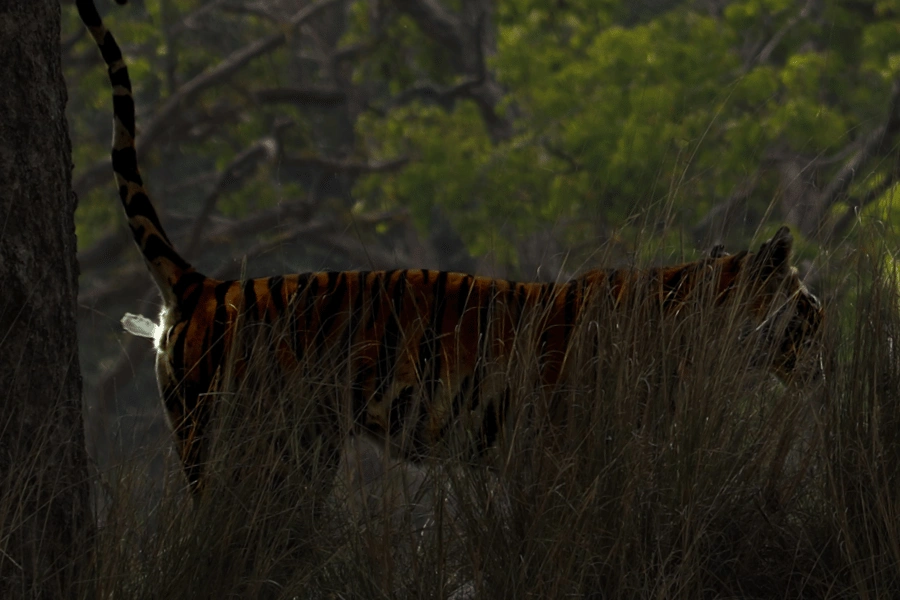
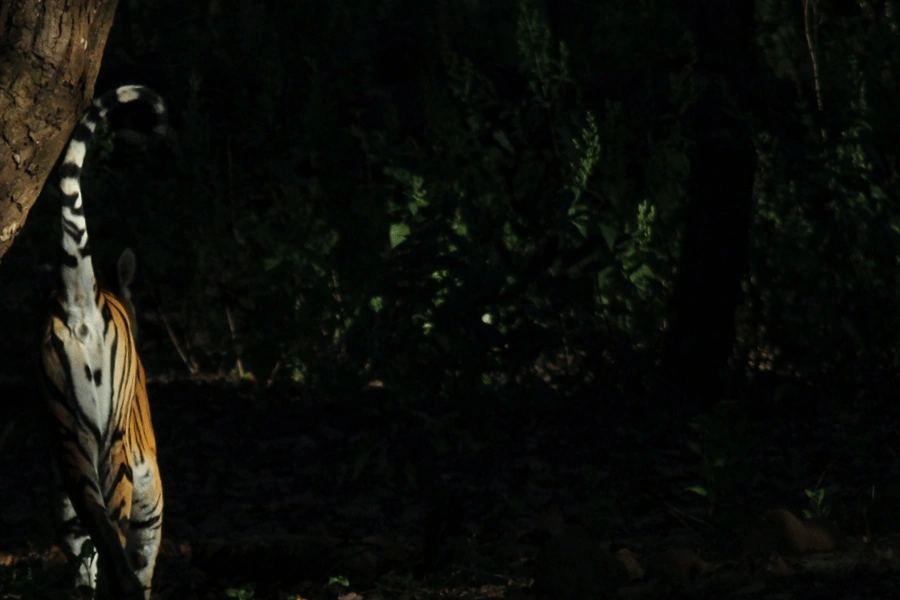
Spray marking consists of urine or secretions from the anal gland which is whitish precipitate with granular clumps. 98 volatile compounds and elemental sulphur are been identified from this whitish precipitate (Burger et al. 2008). Usually, tigers spray on vegetation such as clumps of grass or on trees close to roads or forested trails or even near waterholes& stream beds in intervals. In one instance I have even smelled a fresh spray on a rock which was on the side of a forested trail. Spray marks are done when the animal patrols it’s home range. As per Schaller 1967 males eject a narrow spray while females a wider spray. Spray mark is usually upwards at an angle but can be straight as well and can reach 3-4 feet above the ground. On leaning trees, it is sprayed underside of the tree, can be a reason to protect the mark from rainfall (Brahmachary & Dutta 1981). As per Schaller 1967 the odour of the spray can remain up to 3-4 weeks except rainfall, in one instance up to 3 months.
Tigers start spray marking when they start the process of establishing their own areas. I have also observed tigers spray marking approximately at 17-18 months onwards, when they still roam with their mothers but try to show dominance over their siblings. There are certain functions of the scent, which enables one individual to follow or repel the other individual and also to mark the home range. The scent can also tell a male whether a particular female is in oestrus or not, and also can help identifying individual identity (Schaller 1967). As per Leyhausen and Wolff (1959), the scent can even help in avoiding encounters.
Spraying is done more where there is overlapping of home ranges or on the borders of territory. Also, males mark more when the female is in oestrus whereas females mark more during the onset of oestrus cycle but less during the oestrus period (Smith et al. 1989)
Also, most of the time, I have observed tigers (both genders), immediately touch the nose after spray marking, as seen in the following photo. And when there were few drops of spray; they didn’t touch their nose. A behaviour which is yet to be studied.
If you are fond and familiar with the smell of Basmati rice. Bingo! You won’t be missing out the smell of pheromones released from fresh spray marking which smells exactly like your favorite basmati rice.
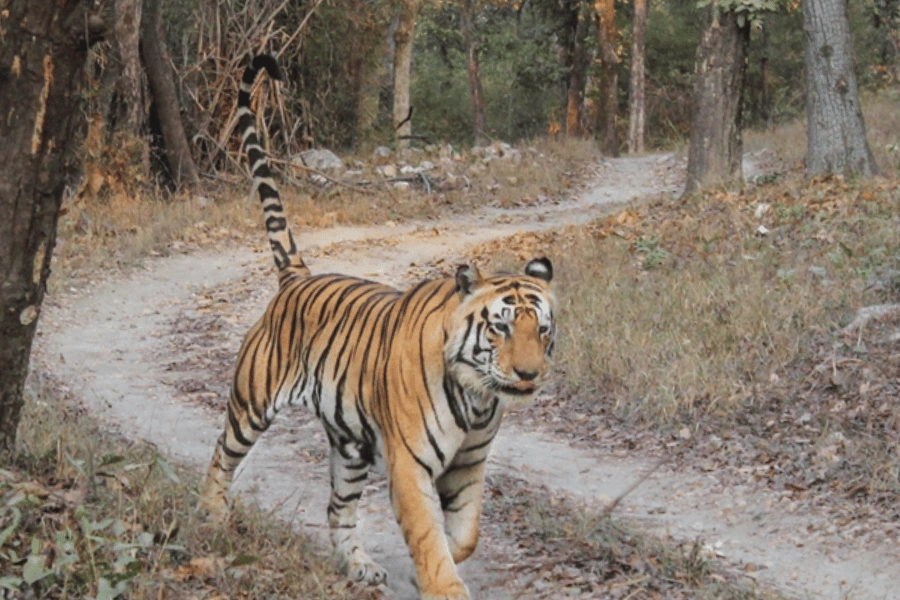
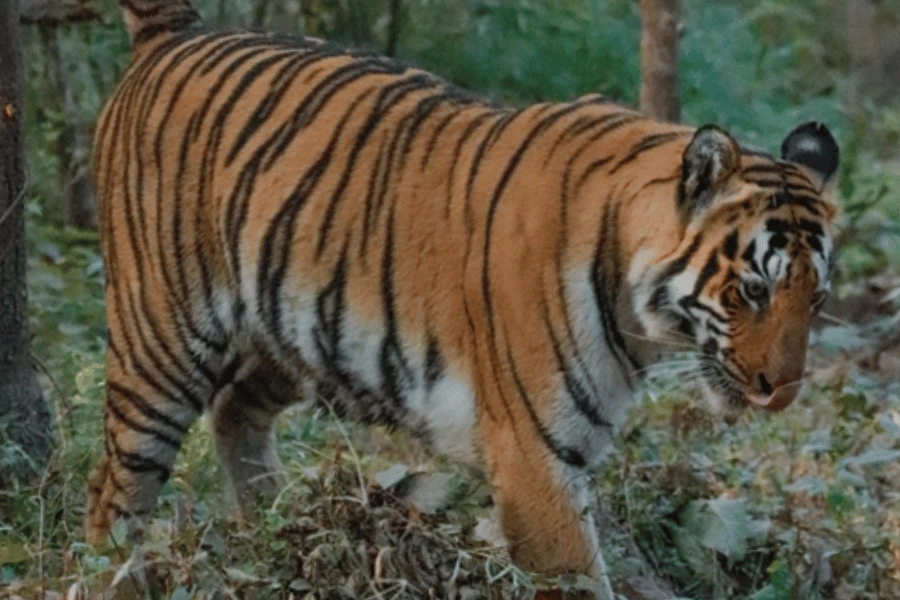
Scrape Marks
Scrape marking is another common method of marking. Scrape marks are done on the ground next to roads or trails, on the grass or dry leaves. Scrape marks prove to be good visual indication as well. Scrape marks are done by rubbing both hind paws alternatively, and are broad from where the tiger starts scratching the ground and narrower at the end where the individual waves its paws backwards. Schaller observed scratching the ground 2 to 20 times with the claws of its hind paws. Feces or urine spray is at the end or nearer to the narrower side of the scrape. Scrapes are again concentrated more in areas where there is overlapping of two or more tigers. As per my personal observations, there can be seasonal variations in scrape markings.
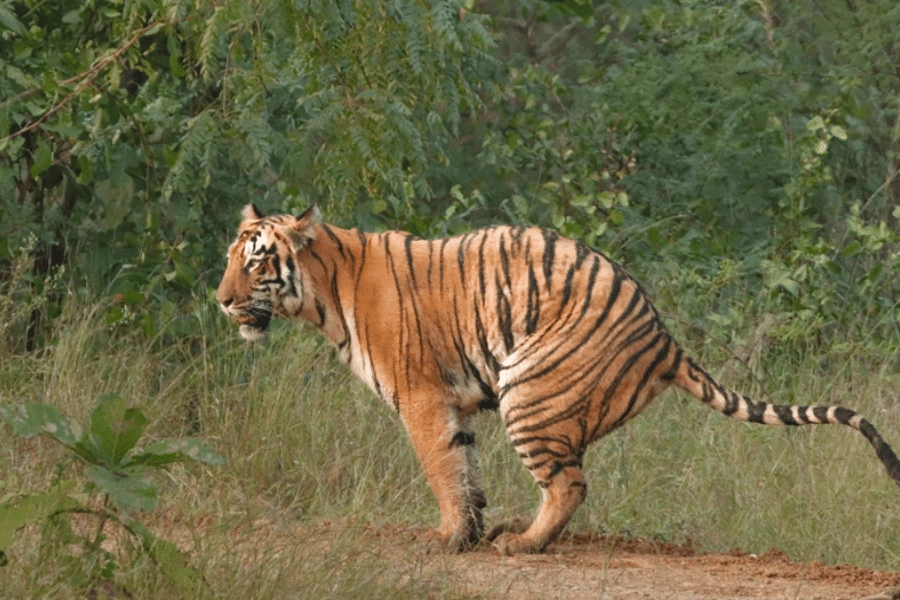
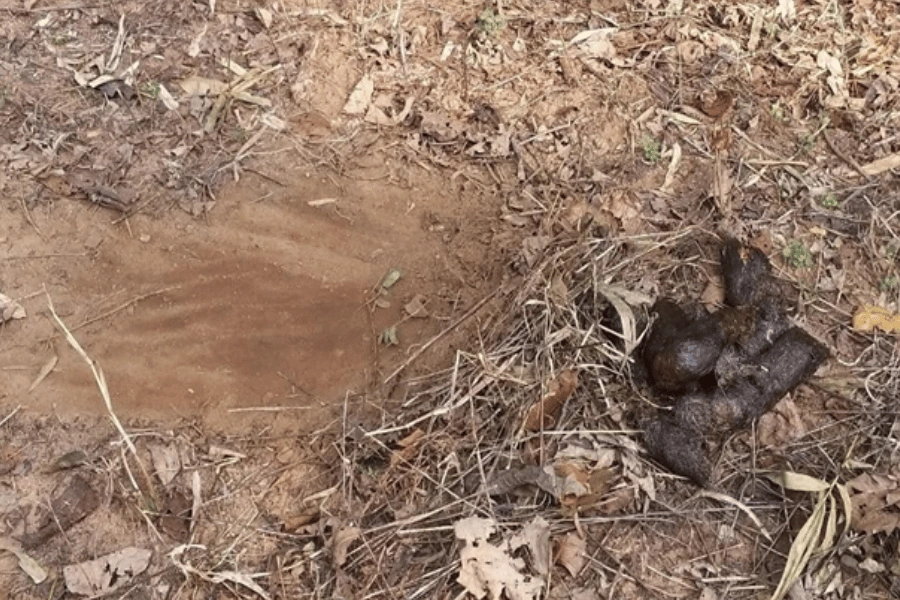
I have observed variations in scrape marking. Scrape marks are mostly associated with faeces. But scrape marks with only urine or anal gland secretion, only faeces and urine, only faeces and in some instances no urine or faeces have also been observed.
In this case there was no scrape done, but there was just deposition of fresh urine & faeces in middle of a forested road.
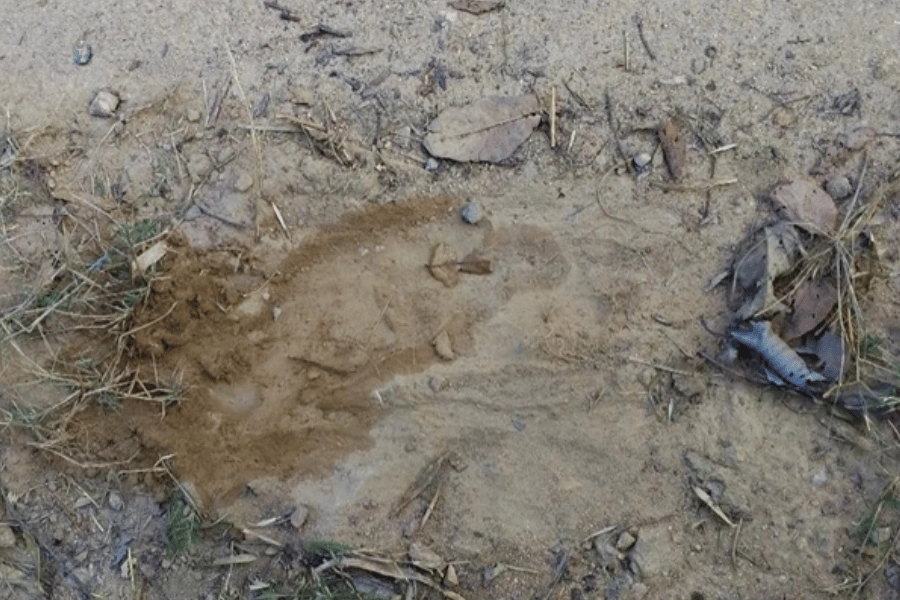
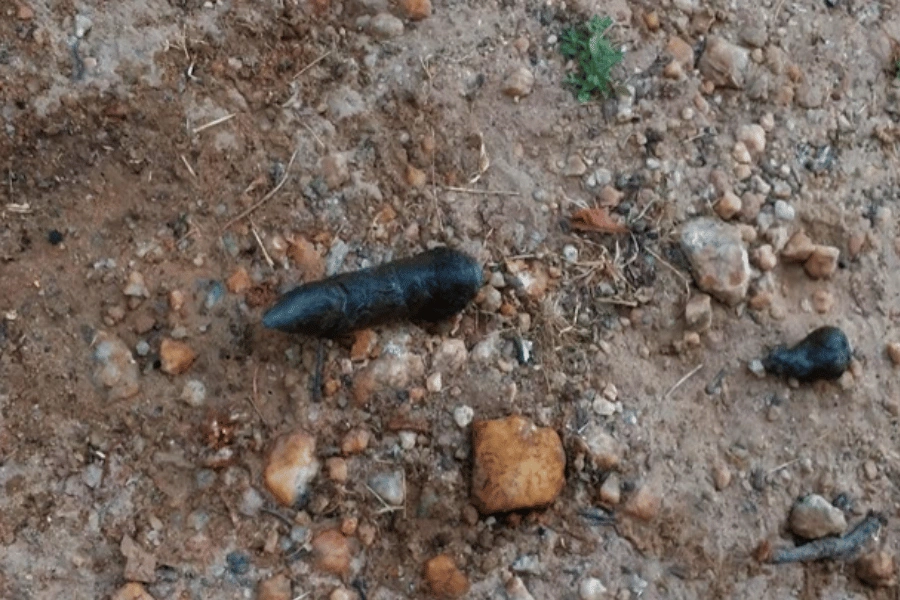
Scrape with only faeces.
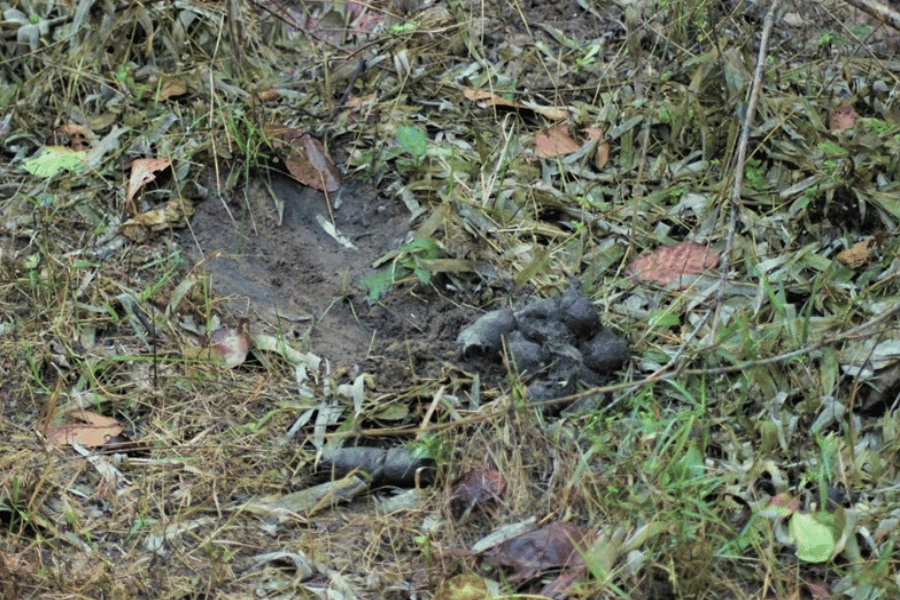
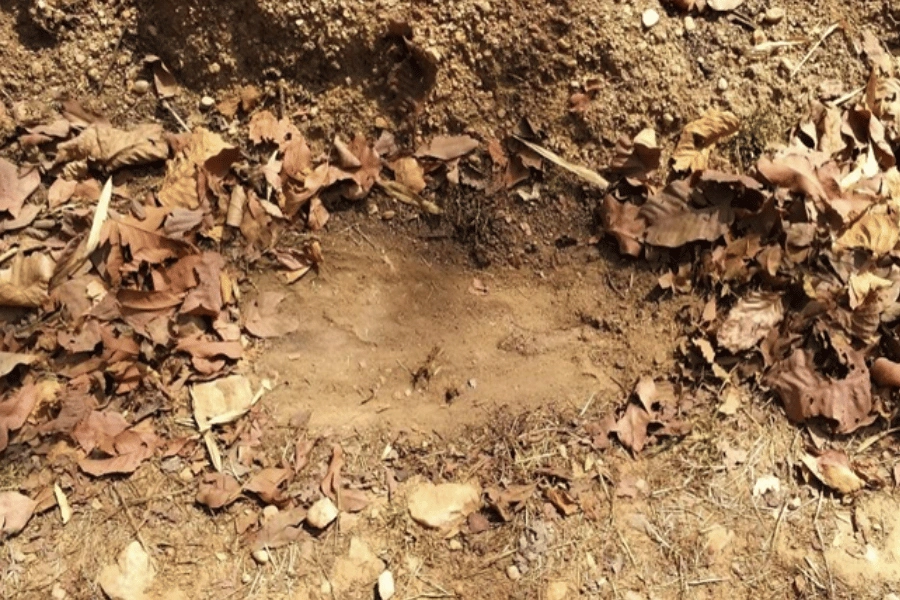
In this instance there was no trace of urine or faeces. Only scratching on the ground was done. Such scrapes can lead towards the direction; the individual has passed. I have observed males scraping in such a way when they are vocalizing for females.
Analysis
This was about signaling with the help of chemicals. But what happens when other individual finds these signals…
It’s said that tiger’s sense of smell is poor, but that’s not the case. Tigers have a fine sense of smell (Baker, 1890, Peacock, 1933, Corbett, 1957, Schaller, 1967).
As the tiger senses a scent, first it sniffs it for few minutes.
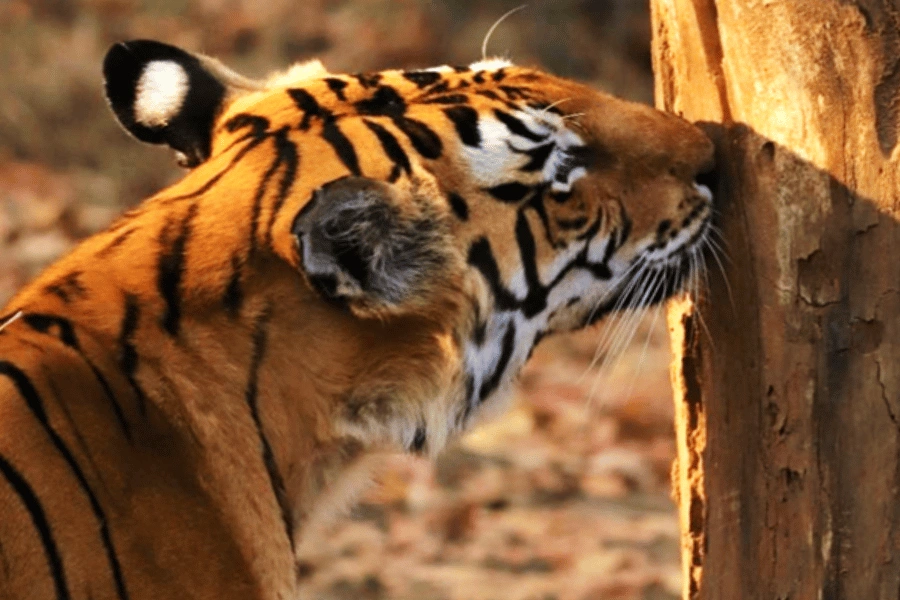
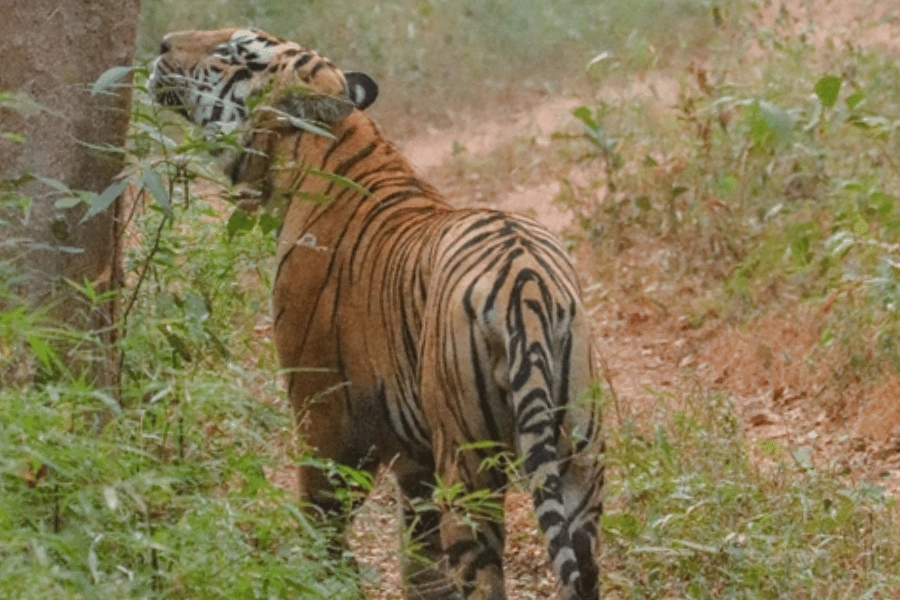
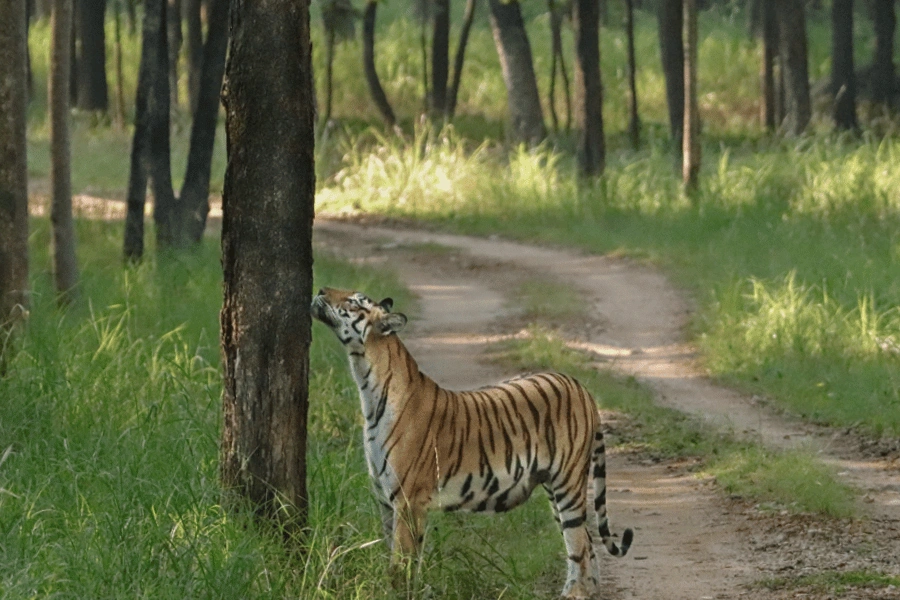
After sniffing, the individual may exhibit a Flehmen’s response if it smells the scent of another individual or any foreign scent. This is how analysis of foreign scent is done, by lifting the head, taking the tongue out, lips inside and mouth open for few seconds or few minutes.
The scent is carried to the vomeronasal organ which is also known as Jacobson’s organ, and analysis of the scent is done in this organ.
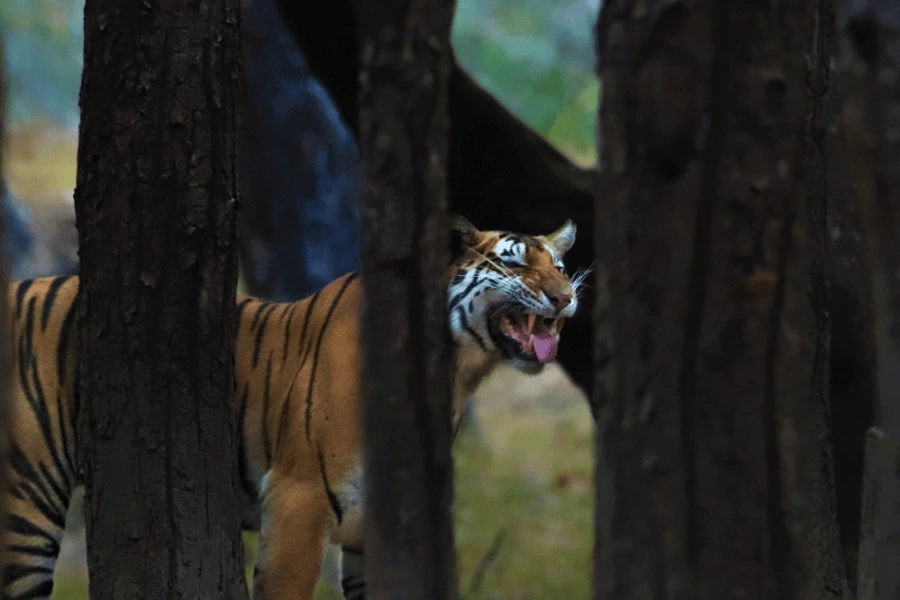
If the individual displaying Flehmen’s response want to communicate, it may spray at that particular patch or nearby where it initially sniffed the scent.
I have observed that tigers don’t exhibit flehmen’s for each and every scent after sniffing. That means they can identify their own scent and differentiate it with other individuals.
This is all about Chemical communication…
Visual or Auditory Signaling
Physical communication is visual or auditory signaling. Communication happens via Rake marks, Gestures and Vocalization.
Rake Marks.
Rake marks are done on tree bark. The individual stands on its hind legs and scrapes the tree bark with the claws of its front paws. Males can reach more in height, approximately 10-11 feet above the ground. Usually soft barked trees are being preferred. Trees such as Ghost tree (Sterculia urens), Salai (Boswellia serrata), Dhava (Anoegissus latifolia), Arjun (Termenalia arjuna), Mahua (Madhuca longifolia) are commonly used for rake marking.
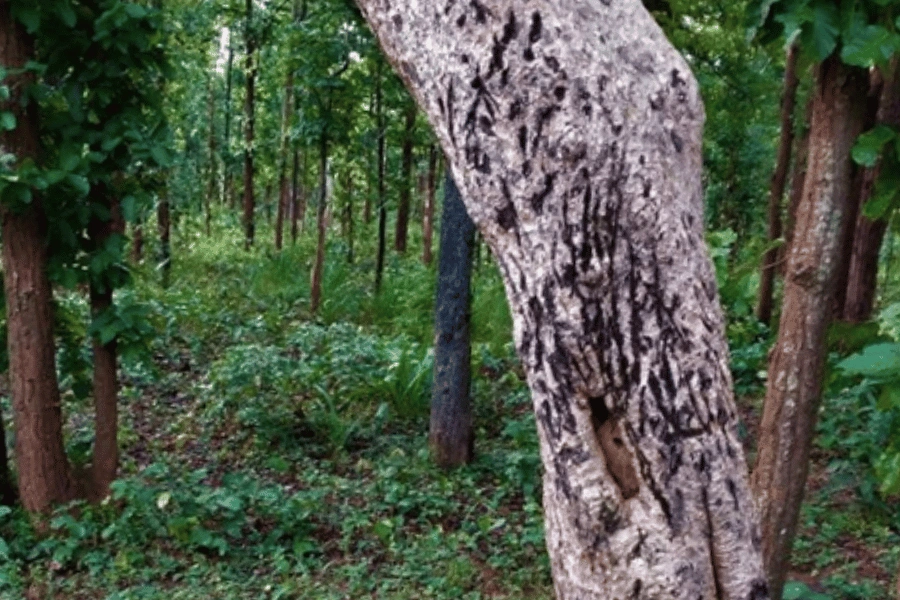
Rake marks are also done more in areas where there is overlapping. Same trees are marked repeatedly. Two or more individuals can mark the same tree. Individuals try to reach as high as they can to exhibit dominance and appear bigger in size. Even spray mark is done on the same tree where there are rake marks.
Tigers also have glands in their cheeks and paws. So many times, while rake marking, tigers will rub their cheeks and paws on tree bark to release pheromones on the tree as seen in below.
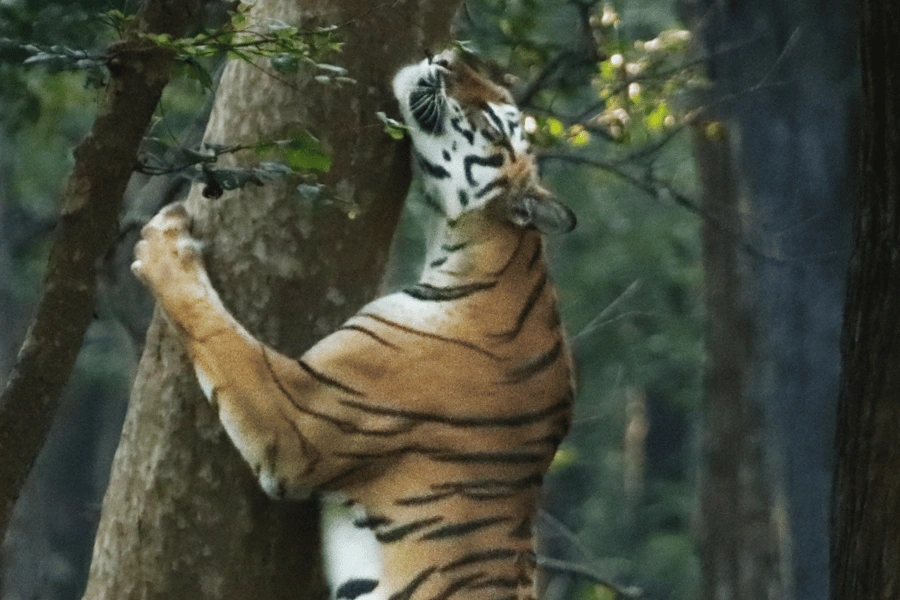
Gestures or Posture
Gestures are done when two individuals are in visual range. Body positions or expressions are displayed. There can be lot of gestures in tiger world which still may not be known to humans. Some observations are
a. Expression of anger
Expression of anger can’t be missed out and is also exhibited by a growl. Mouth half open, wrinkles on nose, canine display, eyes staring at you are expressions of being angry.

b. Tail Flicking
Flicking of tail is done to signal another individual to follow it. It’s done by a mother to signal her cubs to follow her, by a male to a female during courtship, also by a male to his cubs. And circling tail and banging it on ground while crouching indicates restlessness or stressing of that individual.
c. Yawning
I have observed many times, tiger after yawning 3-4 times while sitting, gets up and starts walking.
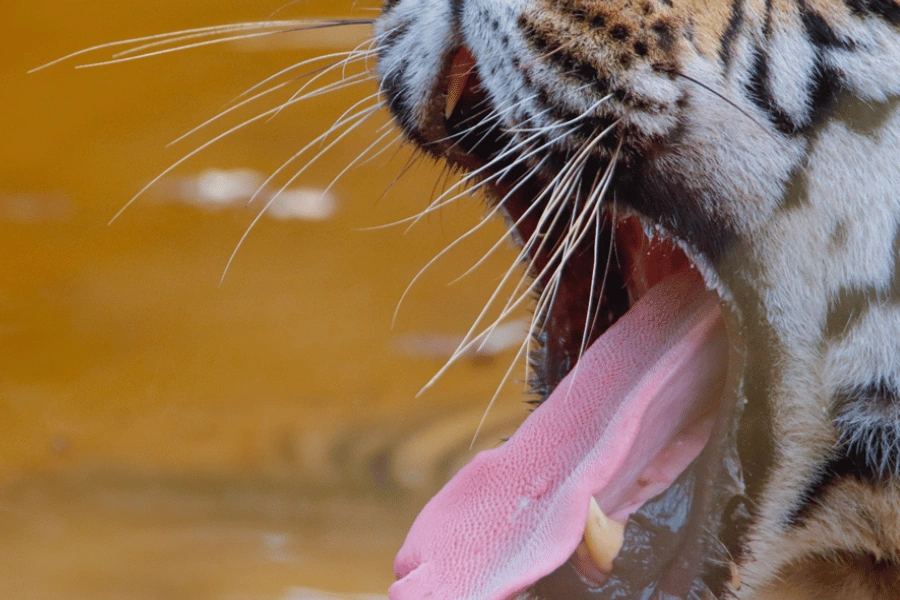
d. Licking of front Paws and rubbing them on face
It suggests that the individual is feeling hot and wants to cool itself, soon it may make its way towards a body of water, and this behaviour is also a part of grooming
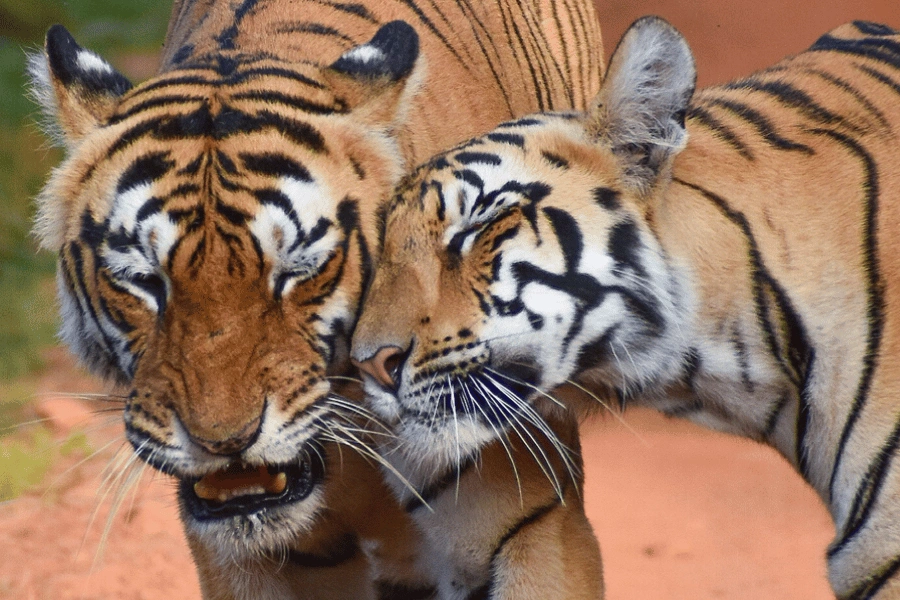
Vocalization
Most of the time tigers prefer to be silent, but they become vocal when they are in heat, when a mother calls her cubs or during a fight or during mating.
Different types of vocalizations have been heard for different situations.
a. Roaring
Can be heard as Awwhhhhhm is usually done to call a mate, but also to challenge or claim an area. Soft roars can be heard when a mother calls her cubs.
b. Growling
Heard during a fight or during aggression.
c. Prusten
To greet other individual in a friendly manner.
References
Burger, B.V., Viviers, M.Z., Bekker, J.P.I. Roux, M. l., Fish, N., Fourie, W. B. & Weibchen, G. (2008)
Chemical Characterization of Territorial Marking Fluid of Male Bengal Tiger, Panthera tigris. Journal of Chemical Ecology. 34:659
Corbett, J. 1957. Man eaters ofindia. London.
Leyhausen, P. and Wolff, R. 1959. Das Revier einer Hauskatze. Z. F. Tierpsych., 16(6): 666-70.
Peacock, E. 1933. A game book for Burma and adjoining territories. London. Sankhala, 1977
Schaller, G. B. (1967) The deer and the tiger. University of Chicago Press. USA.
Smith, 1984
Smith, J. L. D., McDougal, C. & Miquelle, D. 1989. Scent marking in free ranging tigers, Panthera tigris. Anim. Behav. 37, 1-10
Baker, S. 1890. Wild beasts and their ways. London. Brahmachary and Dutta.

